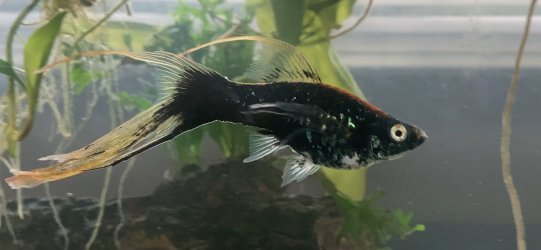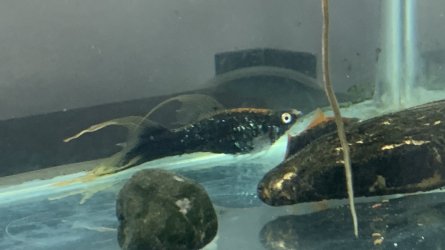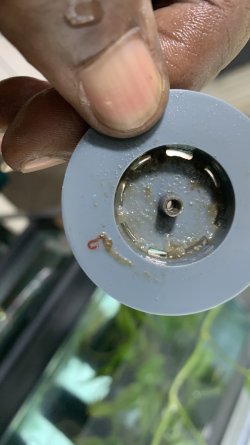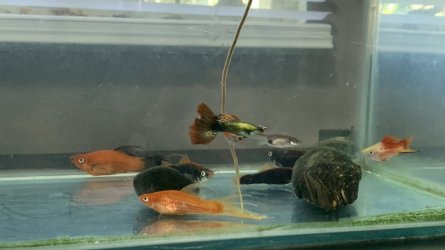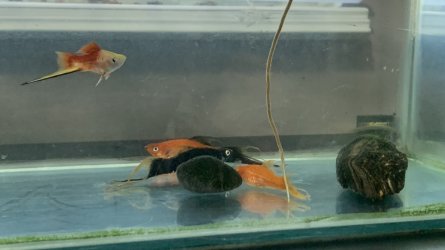Approximately 2-3 weeks After adding some water plants with mixed sand pots into my tank I noticed the quantity along the glass and in water. I cleaned regularly and got the numbers down.
the quantity of what?
Can you post a video of the fish?
You can upload videos to YouTube, then copy & paste the link here.
If you use a mobile phone to film the fish, hold the phone horizontally (landscape mode) so the footage fills the entire screen and doesn't have black bars on either end.
What are the tank dimensions (length x width x height)?
What is the GH (general hardness), KH (carbonate hardness) and pH of your water supply?
This information can usually be obtained from your water supply company's website (Water Analysis Report) or by telephoning them. If they can't help you, take a glass full of tap water to the local pet shop and get them to test it for you. Write the results down (in numbers) when they do the tests. And ask them what the results are in (eg: ppm, dGH, or something else).
--------------------
If the fish are not acting normally, do the following.
Test the water for ammonia, nitrite, nitrate and pH. Post the results in numbers here.
Wipe the inside of the glass down with a clean fish sponge. This removes the biofilm on the glass and the biofilm will contain lots of harmful bacteria, fungus, protozoans and various other microscopic life forms.
Do a 75% water change and gravel clean the substrate every day for a week or until the problem is identified. The water changes and gravel cleaning will reduce the number of disease organisms in the water and provide a cleaner environment for the fish to recover in. It also removes a lot of the gunk and this means any medication can work on treating the fish instead of being wasted killing the pathogens in the gunk.
Make sure any new water is free of chlorine/ chloramine before it is added to the tank.
Clean the filter if it hasn't been done in the last 2 weeks. However, if the filter is less than 6 weeks old, do not clean it. Wash the filter materials/ media in a bucket of tank water and re-use the media. Tip the bucket of dirty water on the garden/ lawn. Cleaning the filter means less gunk and cleaner water with fewer pathogens so any medication (if needed) will work more effectively on the fish.
Increase surface turbulence/ aeration to maximise the dissolved oxygen in the water.

